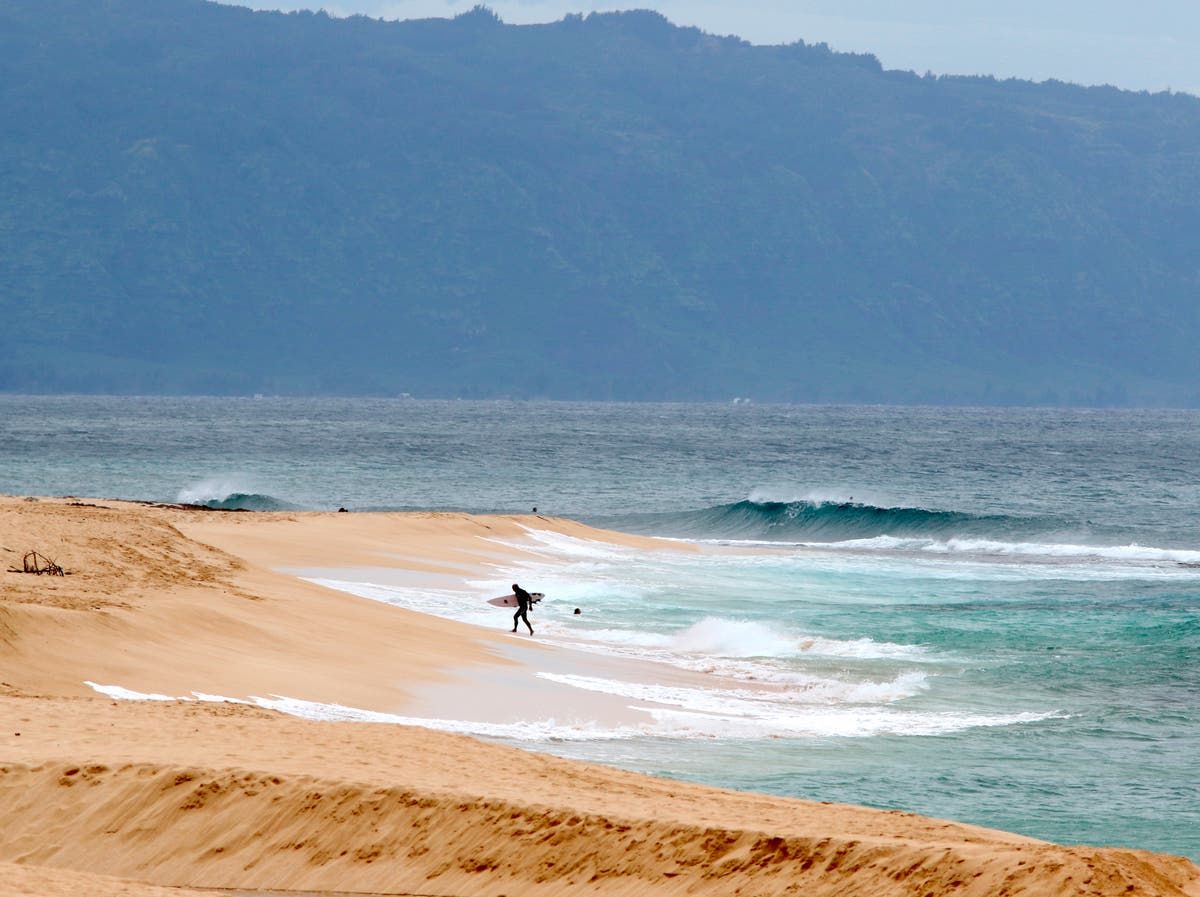Shark Attack Incidents

Shark attack hawaii – Shark attacks in Hawaii have occurred throughout history, with varying degrees of severity. These incidents have raised concerns about safety and highlighted the importance of understanding shark behavior and taking appropriate precautions.
In the crystalline waters of Hawaii, the terror of shark attacks casts a chilling shadow. Yet, across the vast expanse of the Pacific, a somber parallel unfolds at Panama City Beach, where drowning’s icy grip has claimed lives panama city beach drowning.
The ocean’s treacherous embrace knows no bounds, reminding us of the fragility of life in the face of its relentless power. And as the sun dips below the horizon in Hawaii, casting an eerie glow on the water, the memory of shark attacks lingers, a haunting reminder of the unforgiving nature of the sea.
The factors contributing to shark attacks in Hawaii are complex and multifaceted. Environmental conditions, such as water temperature, visibility, and wave height, can influence shark behavior and increase the likelihood of encounters with humans. Human behavior, such as swimming or surfing in areas frequented by sharks, can also increase the risk of an attack.
The waters of Hawaii are once again stained red, this time by the jaws of a great white shark. The tragedy echoes the recent drowning of three swimmers in Panama City Beach, a chilling reminder of the dangers that lurk beneath the surface.
As the sun sets, casting an eerie glow over the ocean, the fear of the unknown lingers, reminding us that even in the most tranquil of waters, death can strike with unforgiving swiftness.
Notable Shark Attack Incidents in Hawaii
- January 30, 1994: A 20-year-old man was fatally attacked by a tiger shark while spearfishing off the coast of Maui.
- October 11, 2004: A 41-year-old woman was seriously injured by a tiger shark while swimming off the coast of Oahu.
- June 24, 2015: A 60-year-old man was fatally attacked by a great white shark while spearfishing off the coast of Maui.
- November 19, 2021: A 63-year-old man was seriously injured by a tiger shark while swimming off the coast of Hawaii Island.
Trends and Patterns in Shark Attack Incidents in Hawaii, Shark attack hawaii
Shark attack incidents in Hawaii have fluctuated over time, with periods of increased and decreased activity. The number of attacks has generally remained low, but there have been several notable incidents in recent years. The majority of attacks have occurred in shallow waters close to shore, and most victims have been engaged in water activities such as swimming, surfing, or spearfishing.
Shark Species Involved

Hawaii’s waters are home to over 40 species of sharks, but only a handful of these have been involved in attacks on humans. The most common species responsible for attacks in Hawaii are:
- Tiger shark (Galeocerdo cuvier)
- Great white shark (Carcharodon carcharias)
- Galapagos shark (Carcharhinus galapagensis)
- Sandbar shark (Carcharhinus plumbeus)
- Scalloped hammerhead shark (Sphyrna lewini)
These species are all large, powerful predators that are known to attack humans, although the reasons for these attacks vary. Some species, such as the tiger shark, are known to be opportunistic feeders that will attack anything that comes their way. Others, such as the great white shark, are known to mistake humans for their natural prey, such as seals or sea lions.
Tiger Shark
The tiger shark is the most common species of shark involved in attacks in Hawaii. Tiger sharks are large, powerful predators that can grow up to 18 feet long and weigh over 1,000 pounds. They are known for their aggressive behavior and are often seen scavenging for food near shore. Tiger sharks are opportunistic feeders and will attack anything that comes their way, including humans.
Great White Shark
The great white shark is one of the most feared sharks in the world. Great white sharks are large, powerful predators that can grow up to 20 feet long and weigh over 5,000 pounds. They are known for their aggressive behavior and are responsible for a number of fatal attacks on humans. Great white sharks are known to mistake humans for their natural prey, such as seals or sea lions.
Galapagos Shark
The Galapagos shark is a large, powerful predator that can grow up to 12 feet long and weigh over 500 pounds. Galapagos sharks are known for their aggressive behavior and are often seen scavenging for food near shore. Galapagos sharks are known to attack humans, although the reasons for these attacks are not well understood.
Sandbar Shark
The sandbar shark is a large, powerful predator that can grow up to 8 feet long and weigh over 200 pounds. Sandbar sharks are known for their aggressive behavior and are often seen scavenging for food near shore. Sandbar sharks are known to attack humans, although the reasons for these attacks are not well understood.
Scalloped Hammerhead Shark
The scalloped hammerhead shark is a large, powerful predator that can grow up to 13 feet long and weigh over 1,000 pounds. Scalloped hammerhead sharks are known for their aggressive behavior and are often seen scavenging for food near shore. Scalloped hammerhead sharks are known to attack humans, although the reasons for these attacks are not well understood.
Prevention and Mitigation Strategies: Shark Attack Hawaii

To minimize the risk of shark attacks, Hawaii has implemented a range of prevention and mitigation strategies. These measures aim to reduce the likelihood of shark encounters and protect swimmers, surfers, and other water users.
Shark Warning Systems
Shark warning systems are an important tool for alerting beachgoers to potential shark activity. These systems use a variety of technologies, including drones, sonar, and beach patrols, to detect sharks and issue warnings when necessary. Warnings are typically communicated through flags, sirens, or public announcements.
Shark warning systems have been shown to be effective in reducing the risk of shark attacks. However, they have limitations. For example, they may not be able to detect all sharks, and they can be affected by environmental conditions such as poor visibility or strong currents.
Shark Deterrents
Shark deterrents are devices or substances that are designed to repel sharks. These deterrents can be used in a variety of settings, including beaches, surf spots, and fishing areas.
There are a number of different types of shark deterrents available, including electronic deterrents, chemical deterrents, and physical barriers. Electronic deterrents emit electrical pulses that are designed to deter sharks. Chemical deterrents are typically applied to the skin or clothing and are designed to create a barrier that sharks find unpalatable. Physical barriers, such as shark nets or drumlines, are designed to physically prevent sharks from entering an area.
The effectiveness of shark deterrents varies depending on the type of deterrent and the specific circumstances. Some deterrents have been shown to be effective in reducing the risk of shark attacks, while others have not. More research is needed to determine the effectiveness of different shark deterrents.
Education and Outreach
Education and outreach programs are an important part of shark attack prevention. These programs teach people about shark behavior, how to avoid shark encounters, and what to do if they encounter a shark.
Education and outreach programs have been shown to be effective in reducing the risk of shark attacks. By teaching people about sharks and how to avoid them, these programs can help to prevent shark encounters and reduce the likelihood of attacks.
In the treacherous waters off Hawaii, where shark attacks have become a haunting reality, a sliver of respite lies in the serene Goat Island, a sanctuary where visitors can swim and snorkel amidst the teeming marine life. Yet, the allure of this idyllic paradise is tempered by the knowledge that even within its tranquil embrace, the lurking threat of a shark encounter remains a chilling reminder of the untamed wilderness that surrounds us.
Amidst the frenzy of the shark attack off Hawaii, it’s crucial to understand the hidden danger lurking beneath the waves: rip currents. These powerful currents, often invisible to the naked eye, can swiftly pull swimmers out to sea. What is a rip current , you ask?
It’s a narrow channel of fast-moving water that flows away from the shore, often through breaks in the sandbar. If caught in its grip, even experienced swimmers can struggle to escape. Therefore, it’s essential to stay alert and be aware of the potential for rip currents when enjoying the ocean’s beauty.
In the azure waters of Hawaii, where sharks glide with stealth, a tale of survival unfolds. Like a scene from a nightmare, the tamayo shark attack left an indelible mark on the annals of marine encounters. The tamayo shark attack serves as a grim reminder of the unforgiving power of nature, echoing the countless stories of those who have ventured into the ocean’s depths.